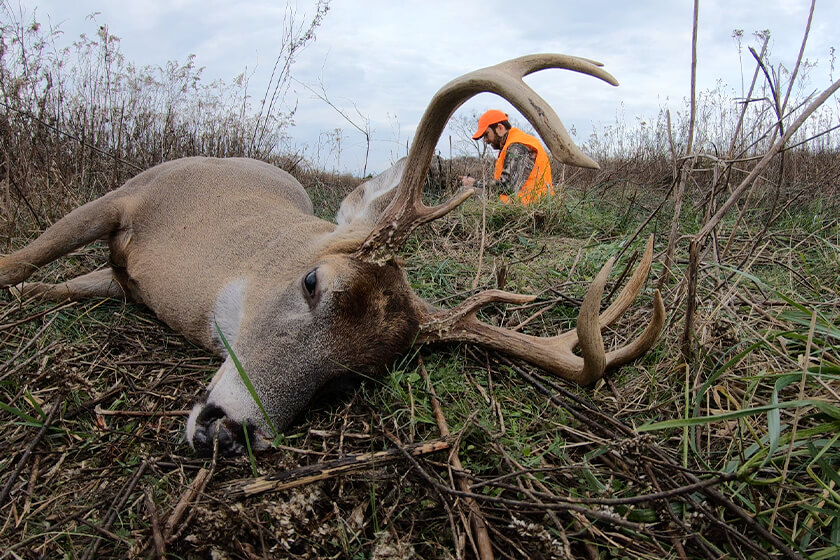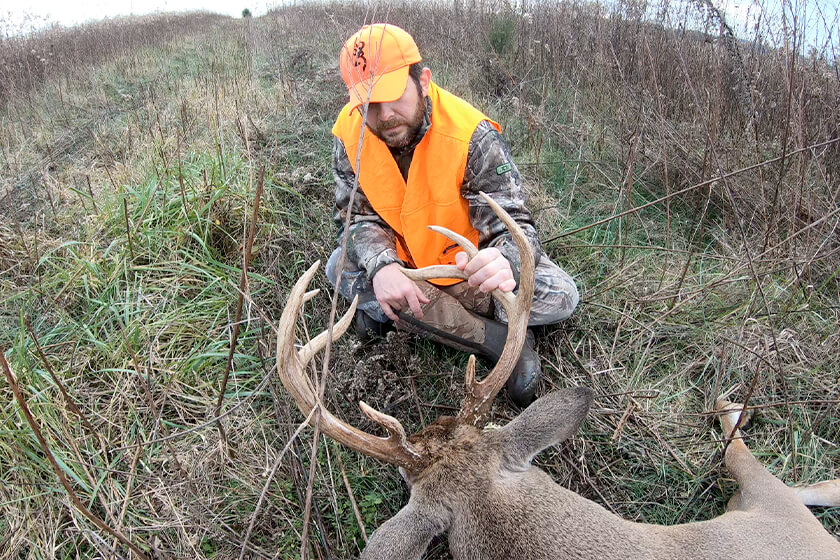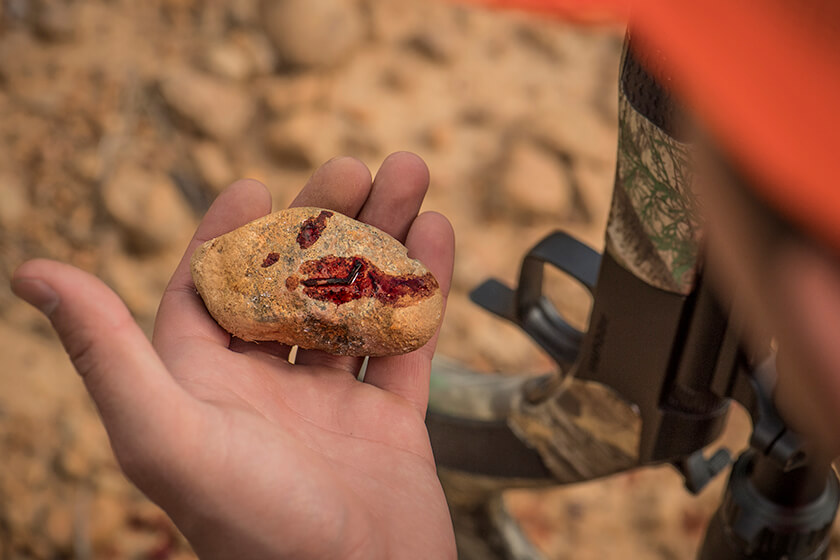
Finding success isn’t guaranteed. But with work and effort, it’s much more likely. (Photo courtesy of Honeycutt Creative)
Those who deer hunt on public lands know just how difficult it is. It’s even harder for those who hunt a long way from home. Generally, these are short trips with limited time to scout and hunt. This makes it extremely important to find the best spots as fast as possible — preferably in one day — to maximize hunting time.
E-Scouting
The good news is you can search for the things mentioned above by using online services. Wildlife agencies and DNRS have a plethora of public-land maps on their websites. It’s up to hunters to take the time to pick over the ones they like, the ones they don’t, and ones that really stand out to them.
Most of these are basic maps with property lines and limited terrain features. Generally, you’ll need to shift over to a mapping service to see the complete detail. More on that momentarily.
Forums also hold valuable information. Don’t expect anyone to be too forthcoming with information, but you can find nuggets of notable information. It just takes time and effort to find it.

Also, dig through trophy records systems, such as Boone and Crocket, and Pope and Young. Oftentimes, you can study these data compilations to determine which counties within states produce the best results. Find a piece of public hunting land within those areas and you just might score yourself in an area with great genetics.
There are other ways hunters can e-scout, too: call biologists or public land managers, look at state harvest reports, just pull anything you can find. Use that information at your disposal.
App Scouting
Once you’ve sifted through all the online data and published material you can find, it’s time to drill down on specific properties. Find the pieces of ground that you like best, but realize that if they look good to you, they’ll look good to others. On public land, sometimes the best pieces are those that don’t look good from 5,000 feet above. Remember that.

That said, once you’ve chosen a few properties to focus on, use a hunting app, such as HuntStand, to learn as much as possible. Finding a given property’s honey hole isn’t easy. But it’s doable. It’s important to learn how to break down a property as quickly as possible and identify the most likely spots in the area. Part of that is knowing what to look for.
Everything in a whitetail’s life revolves around food, water, bedding, and security. Nothing else matters or exists in their world. It’s all about living to see another day, and the four things listed above control every aspect of that. So, finding hunting spots that satisfy these requirements is essential for deer hunters.
When searching, look for certain hotspots that deer commonly inhabit, drill down on bedding areas, food sources, and water sources. Certain areas offer these things better than others. So, always keep an eye out for unique aspects like: benches, clear cuts, drainages, inside field corners, islands, isolated cover, leeward ridges, outcroppings, overhangs, oxbows, potential staging areas, ridge endings, saddles, small woodlots, solar bedding (north-facing slopes in summer, south-facing slopes in winter) thick cover, thermal bedding (conifers), traditional edges, water seeps, etc.
In-the-Field Scouting
By scouting with a hunting app, you can narrow it down to the likely hotspots, and even mark off places you should likely avoid (naturally void of deer activity, overrun by hunters, etc.). Once in the field, you’re scouting just as you would via an app, but you’re looking to confirm (or not confirm) what you think of the area based on your e- and app-scouting.
Obviously, search for things you can’t see via web or app, such as deer sign. Look for tracks, trails, rubs, scrapes, scat, and other tell-tale signs deer are in the area. Look for the hottest, most recent, and most concentrated sign on the landscape.
When time isn’t limited, I like to start closer to food sources and work back toward bedding cover. Reverse-engineer it, so to speak. You can do this, but if time is very limited, it might be best to dive right into the areas you think are best, such as fringes of bedding areas, staging areas, and secluded travel routes, and determine exactly where you want to hunt with limited boots-on-the-ground scouting. I’d rather push deer out once and learn what they’re doing than not learn at all.
While you’re afield, mark everything you find in your preferred hunting app. These notes are valuable in the short-term, but also for future seasons, too. You never know when you might return, and a lot of the scouting work will be done when you do.
Time to Deer Hunt
Once you’ve e-scouted, app-scouted, and put boots on the ground, it’s time to hunt. If you’re completely confident in your findings, and you know where you need to be, ignore this advice. But if you’ve scouted and are slightly unsure or are completely scratching your head, heed it. I’d rather spend more time scouting to find the right spot, and less time hunting, than scout little and hunt in a bad spot the entire trip.
That’s said, there’s a balance. You must start hunting at some point or you’ll run out of time. So, for a week-long trip, I’d scout at most three days, and spend the remaining four in the best spot. Once you’ve spent adequate time searching for a spot to hunt, though, it’s time to get after it. And the term I like to use is to hunt to scout, not scout to hunt. I know that sounds contrary to my previous statement, but it isn’t.
You see, if you’re several days in and struggling to find where you want to be, start with the best you’ve found and begin hunting. Maybe sit an observational stand. Maybe dive right in. Regardless, start with the best you have and adjust as needed.
It’s also good to hunt your way in. Keep pushing forward until you come across hot sign, and then make your stand there. It’s all about being where the deer are.
All things considered, finding the best spot on a given piece of public land in one day isn’t easy. But with a sound scouting plan prior to and upon arrival, it can be done. You’ll maximize your hunting time, and just might tag a deer that makes you happy.











